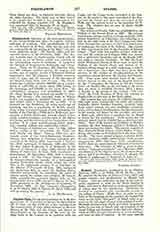

Stansel, VALENTIN, astronomer, b. at Olmutz, Moravia, 1621; d. at Bahia, Brazil, December 18, 1705. He entered the Society of Jesus on October 1, 1637, and taught rhetoric and mathematics at Olmutz and Prague. After his ordination he was, at his own request, appointed to work on the Jesuit mission in India, and went to Portugal to await an opportunity of taking ship for his destination. Meantime, he lectured on astronomy with considerable success at the college of Evora. While there, in order to conform to the language of the country, he changed his name to the form “Estancel”, in which form it appears on the title pages of most of his published works.
Obstacles having arisen which prevented his going to India, he was sent to Brazil, and was attached to the Jesuit College and Seminary of San Salvador (Bahia), where he filled the post of professor of moral theology, and later on that of superior. At the same time he continued his astronomical labors, and made extensive observations, particularly on comets, the results of which he sent to Europe for publication. His chief works are: “Dioptra geodetica” (Prague, 1652 or 1654), “Propositions selenegraphicae, sive de luna” (Olmutz, 1655); “Orbe Affonsino, horoscopio universal” (Evora, 1658); “Mercurius brasilicus, sive de Ceeli et soh brasiliensis oeconomia”; “Zodiacus Divini Doloris, sive Orationes XII” (Evora, 1675), “Legatus uranicus ex orbe novo in veterum, h. e. Observationes Americanae cometarum factae, conscriptae et in Europam missae” (Prague, 1683); “Uranophilus coelestis peregrinus” (Ghent, 1685).
EDWARD C. PHILLIPS

